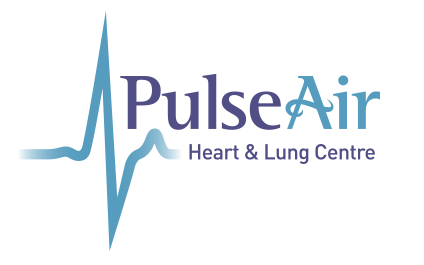At PulseAir Heart and Lung Centre, we understand the importance of diagnosing sleep disorders accurately and conveniently. Home sleep tests (HST) offer a comfortable and effective way to monitor your sleep patterns from the comfort of your own bed. If you have been scheduled for a home sleep test, here are some essential tips to help you prepare and ensure accurate results.
What Is a Home Sleep Test?
A home sleep test is a simplified version of a sleep study that you can perform at home. It typically involves wearing a few sensors that monitor your breathing, oxygen levels, and heart rate while you sleep. This test is primarily used to diagnose sleep apnea, a condition where your breathing repeatedly stops and starts during sleep.
Preparing for Your Home Sleep Test
- Consult with Your Doctor: Before your test, discuss any medications you are taking with your doctor. They may advise you to continue or temporarily stop certain medications to ensure accurate results.
- Understand the Equipment: Familiarize yourself with the equipment you will be using. Your healthcare provider will give you detailed instructions on how to set up and use the device. Make sure you understand how to attach the sensors and operate the device correctly.
- Create a Comfortable Sleep Environment: Ensure your bedroom is conducive to a good night’s sleep. Keep the room cool, dark, and quiet. Remove any distractions that might interfere with your sleep.
- Avoid Caffeine and Alcohol: On the day of your test, avoid consuming caffeine or alcohol, as these substances can affect your sleep patterns and the accuracy of the test.
- Follow Your Normal Routine: Try to stick to your regular bedtime routine as much as possible. This will help ensure that the test captures your typical sleep patterns.
- Dress Comfortably: Wear loose, comfortable clothing to bed. This will make it easier to attach the sensors and ensure you are comfortable throughout the night.
- Avoid Napping: Do not take any naps on the day of your test. This will help ensure that you are sufficiently tired and ready to sleep at your usual bedtime.
During the Test
- Attach the Sensors: Follow the instructions provided to attach the sensors to your body. Common sensors include a nasal cannula to measure airflow, a pulse oximeter to monitor oxygen levels, and belts around your chest and abdomen to measure breathing effort.
- Start the Device: Once the sensors are in place, start the device as instructed. Make sure it is recording properly before you go to sleep.
- Sleep as Usual: Try to sleep as you normally would. The device will collect data throughout the night.
After the Test
- Remove the Sensors: In the morning, carefully remove the sensors and turn off the device.
- Return the Equipment: Follow the instructions for returning the equipment to your healthcare provider. They will analyze the data and discuss the results with you.
Why Take a Home Sleep Test
Home sleep tests are a convenient and effective way to diagnose sleep disorders like sleep apnea. Early diagnosis and treatment can significantly improve your quality of life and overall health. At PulseAir Heart and Lung Centre, we are dedicated to providing you with the best care and support throughout your diagnostic journey. Learn more about our home sleep testing services here.


